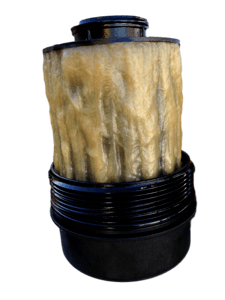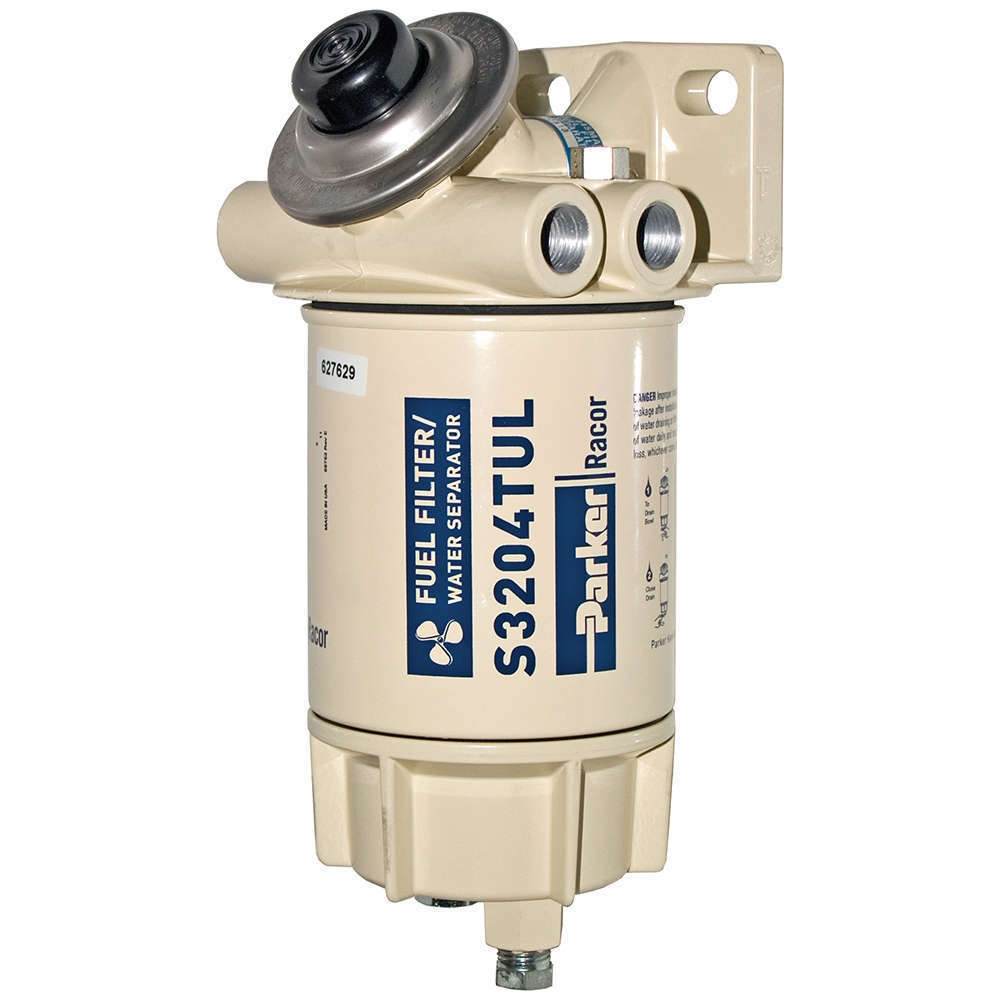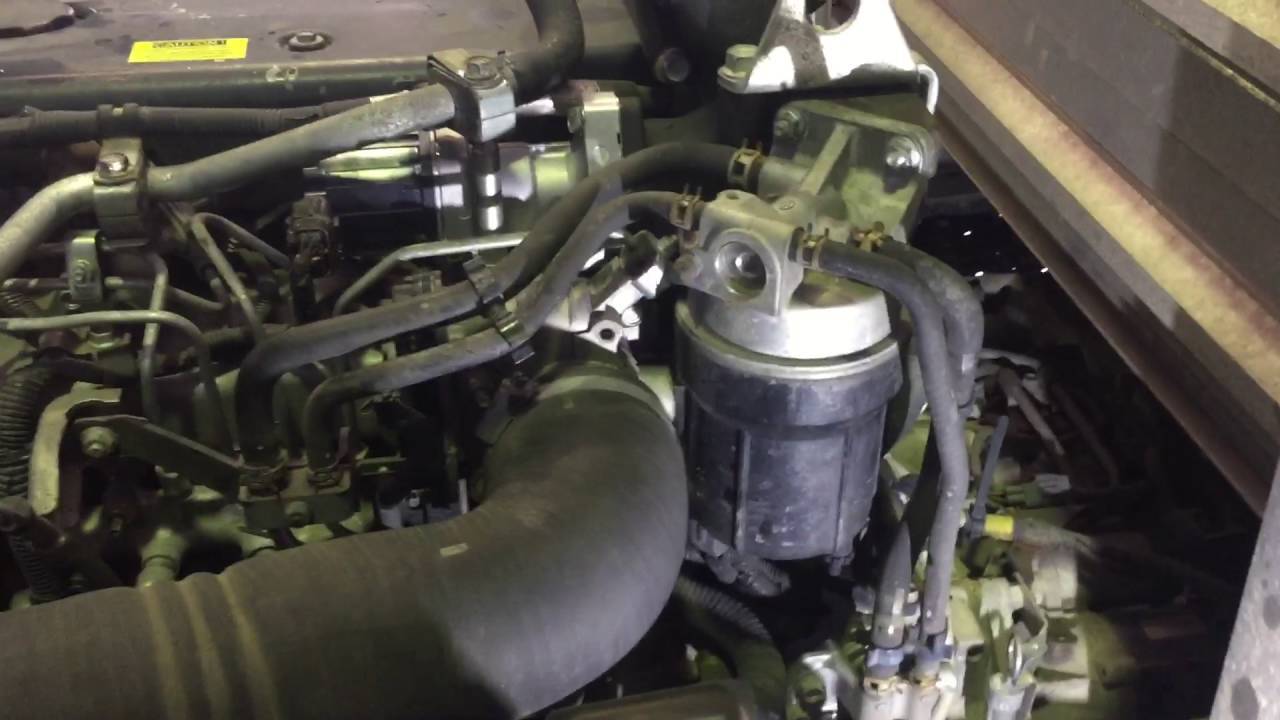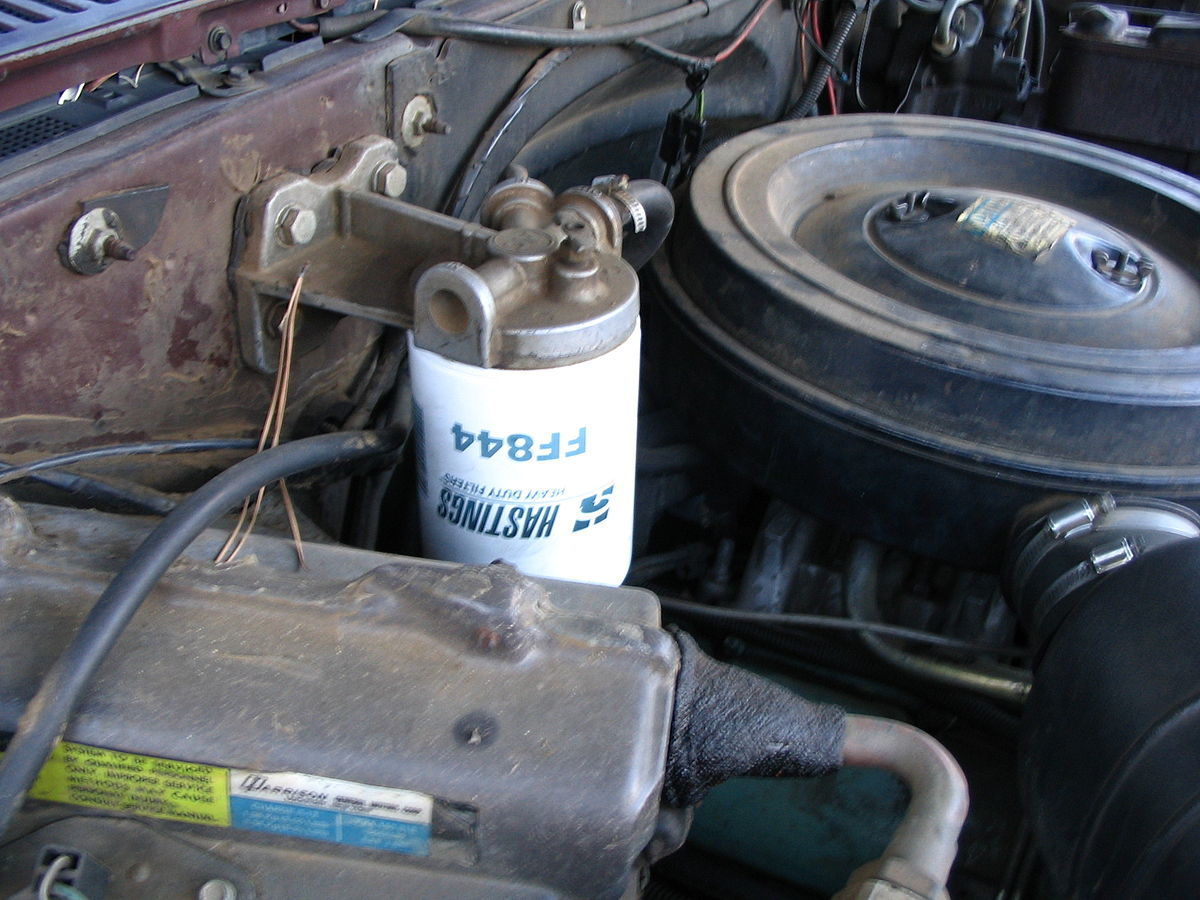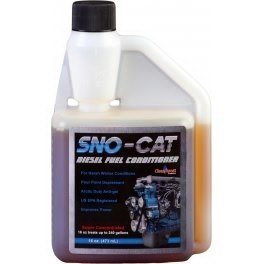Fuel Quality & Diesel Gelling
Come winter, many people with diesel engines experience this pain in the morning... their engine won't start. As fast as anyone can guess, diesel's main issue in the cold is fuel quality and diesel gelling.
Why does this so easily occur? One might say it's dependent on the fuel station you last pumped diesel fuel from... as some hold lower quality fuels often, others might argue that the trucks consumables (filters, water separators, etc.) condition play a decisive role in this issue and that is the cause of a no start.
Fuel quality and diesel gelling are more to blame for non-start conditions than any other reason. However, fuel quality plays a very major role in this that many people easily dismiss or overlook.
Read on to discover all the details to the big picture that will help you avoid headaches, freezing cold, missed appointments and unnecessary downtime when it comes to fuel quality & diesel gelling.
How Does Fuel Quality Affect Diesel Gelling?
Diesel fuel quality has been in the forum headlines more repeatably lately than in winters past... stating that a clean, properly maintained fuel will help you avoid gelling headaches even during really cold winters. Who has quality fuel and who doesn't? How does one maintain his or her diesel fuel in good condition?
Countless hours of research are continuously being poured into obtaining higher diesel fuel quality standards. Transportation and final delivery of diesel fuel plays an ever increasing part of the equation. Generally diesel fuel is very clean when leaving the refinery, but it can pick up contaminants anywhere during it's transit in pipelines, storage in terminals, journeying with the delivery truck, storage at the truck stop or station and even while being pumped into the tank by the dispensing equipment.
The most important detail when it comes to fuel quality and diesel gelling, is that diesel fuel can truly be affected by many forces and elements, regardless of it's handling before or after it is delivered to your on board fuel tank. Why? One word describes it best as diesel fuel, especially ULSD (ultra low sulfur diesel), is "hygroscopic" by nature. Read on.
This means it attracts water, which is the worst enemy of diesel fuels and also engines in general. Water can be attracted from the environment, either from humidity in the air or condensation. Usually condensation appears on the wall of the fuel tank and is practically dissolved and held in the fuel solution. If the fuel temperature increases, so does the amount of water that can be held in it.
There is a rule of thumb about what amount of water is acceptable in diesel fuels
... and that's none! For pretty good reasons too, as water does not mix with diesel at all. Also provides a great environment for microbial growth such as mold, bacteria, and fungus.
This "watered down" diesel fuel quickly reduces its quality and makes the engine run less efficient. Reducing performance or even worse, clogging the fuel filters and prematurely bringing the engine to a full stop.
All this sensibility can be experienced, yet still run, in all seasons except winter. Once winter comes, it brings with it the greatest nightmare of all diesel users - gelling of diesel fuel.
Diesel quality greatly influences the probability of gelling
as without water and contaminants, diesel decently holds up to cold conditions. However this is not the case as these elements definitely are present and we all know it. In real life situations, outside laboratory conditions, there is no easy way to manipulate and store fuel. Unfortunately fuel is most of the times exposed to different humidity levels and the hygroscopic events that ensue.
Due to the viscosity levels and the chemical components of the liquids, water crystallizes faster than diesel. Having diesel fuel with a percentage of water held inside, makes it prone to start to solidify as temperatures drop. Each degree below 20°F, makes the fuel become thicker and ultimately becoming a solid gel. Clogging everything in it's path... filters, fuel lines and the entire fuel system before it reaches the combustion chamber. Also referred to as Diesel Pour Point - the temperature below which the flow characteristics of the liquid are lost.
Even when temperatures are not below 20°F, the risk of developing bacteria inside the fuel tank is still present. As these cultures grow and expand, a biofilm is developed that will increase the overall percentage of impurities and likelihood of problems.
Such developments reduce the fuel quality and increase the likelihood of diesel gelling, making it less performant and more polluting . Mixed together with cold weather and we have the 'perfect storm' recipe for fuel filter disaster.
How Do Fuel Filters Affect Diesel Gelling?
Fuel filters come in many varieties from small round cartridges that are present on fuel lines, to large frame mounted spin on types that may include water separators and even sensors to detect water. They also come in varying degrees of quality depending on application and manufacturers specifications.
These cartridges or spin on filters contain within them, the fuel filter which is made out of filter paper. This paper is ultra-thin, lightweight and has extremely small pores in it. The small pores can catch any rust, paint, dirt particles and other small undesirable debris as fuel passes through them.
Fuel filters represent a key element in today's tight-tolerance, modern engine fuel systems. Fuel injected systems are very sensitive to contaminants. Even a small particle of contaminant can cause expensive damage to valves, injectors or the fuel pumps.
The fuel filters equipped on your truck or diesel powered equipment come in various micron size ratings depending on your vehicle's age. Older diesel fueled models were typically equipped with fuel filter ratings of around 10-20 microns. Newer and more performant diesel fueled models come equipped with 1-3 micron ratings. This has a huge impact on overall fuel quality and diesel gelling.
Before we talk more about fuel filter micron sizing, we need to explain what vendors display on the package and how to identify what you truly need. This may require some digging to actually get this information from some vendors.
Micron ratings come in 2 types:
Nominal rating and Absolute rating.
Most of the times the label just displays a simple "10 micron rating". You would think that the label is providing all the information you need. but it's not.
Let's break it down to better understand it.
A nominal rating of 10 microns for example, means that in real life applications, the filter will catch 50-90% of particles that are 10 microns or above in size. Indeed, a rather wide and ambiguous range of filtering performance.
An absolute rating of 10 microns means it will catch at least 98.7% of particles of 10 microns or above.
Newer diesel engines, for example, and most common rail diesel engines come with a 2-3 micron absolute rating. Put into perspective, the average cross-section of human hair is 50 microns whereas a single bacterial cell measures 2 microns. This has huge implications on how this filter will perform in extreme cold conditions. In conclusion you should always make sure to check for the absolute fuel filter rating.
Always purchase the rating that is indicated by your owner's manual.
Working with such small tolerances
makes the fuel filters vulnerable to cold weather and low quality diesel fuel.
Low quality diesel fuel will already have some issues because of moisture content, biocides and other contaminates that are present.
When the weather gets colder it can push diesel down to the Cloud Point - the temperature at which the paraffin present in diesel fuel starts to form cloudy wax crystals. These wax crystals end up coating the fuel filter elements quickly, drastically reducing fuel flow, ultimately bringing the engine to a full stop.
Examples of wax coated, plugged filters with diesel gelling. Poor quality fuel drives these issues even faster.
This is an example of a plugged fuel filter. Once diesel reaches it's solid, gelled form. There's almost nothing that can be done to revert it to liquid easily.
Some of the only options are:
a) left alone until weather gets warmer and will make it "melt" back to liquid form, or...
b)use an emergency de-gel product such as CleanBoost® Diesel Rescue™ 32oz that will re-liquefy diesel in a matter of minutes.
What Is a Water Separator and Do I Have One?
The water separator is the device that is set into place to ensure that only clean fuel devoid of water, reaches the engine. These devices provide effective protection for engines by removing water and other solid contaminants from the fuel before it enters the fuel injection system.
Water in the fuel produces different outcomes in gasoline engines vs diesel engines. In gas engines, the presence of water can have different effects depending on how much is present. Very low amounts of water do practically no harm, being released as exhaust vapor. A bigger amount of water can lead to poor engine performance and appearance of rust inside the gas tank. This can later plug the fuel filter or deal damage to the engine in higher doses.
However, presence of water in diesel fuel is a different situation. Diesel engines get most of their lubrication from the fuel. Presence of water can wear off the lubricants from fuel injectors and pistons, exposing them to premature wear and tear. This would reduce engine performance and increase the probability of engine failure. The additional problem caused of course, is the fact that water freezes at 32 degrees Fahrenheit.
Today's water separators are mostly made of aluminium
and come in varying sizes depending on vehicle type. The smaller separators need to be drained more often vs. the larger ones. There is good news though, as most of them come equipped with a sensor which lets you know that the water level is high while others have a built-in water evacuation valve that is automated.
For the manual versions, you simply need to remove the plug in order to let the collected dirt and water to flow away, unless you wait too long in cold weather and it's already frozen. It is advised you do this procedure often as allowing it to get too full will reduce it's overall efficiency.
Many diesel powered engines come equipped with a water separator, such as this type shown and is very effective in trapping water contamination present. The separator looks can look similar to these examples and depending on its size, it has 2 or 4 hoses linked.
How Does the Cold Filter Plugging Point Affect Diesel Gelling?
Ask anyone who owns or operates a diesel engine and they will tell you that it's a fine piece of equipment that provides power, torque and generally good efficiency. There's only one downside to all these benefits and that is the fact that it needs some extra care once you begin operating it in cold weather environments.
Researchers developed a test to discover the exact temperatures at which problems appear when running a diesel in the winter. They named their results Cold Filter Plugging Point or the shorter acronym, 'CFPP'. This test is widely used today to identify the lowest temperature (CFPP) at which fuel will still flow through a specific filter. As we all know, any liquid exposed to cold environment changes form sooner or later depending on different variables.
In its most basic formula, diesel contains wax. Normally this wax is found as a liquid solution that gives the fuel a good cetane value and helps in the lubrication process of internal engine parts that come in contact with the diesel fuel (i.e valves, cylinders, pistons, etc).
Once lower temperatures set in, this wax component of the diesel fuel will start to crystallize and reduce it's flowing capabilities.
Before reaching the CFPP where all the fuel lines and fuel filters come to a stop because of solid, gelled fuel, diesel starts to change appearance, going from a clearer amber color to a cloudy liquid. This is known as the Cloud Point, when the fuel is not all that clear any longer and starts to show crystal formation.
To reach Cold Filter Plugging Point
the diesel fuel's temperature needs to drop a few more degrees from the Cloud Point.
The Cloud Point cannot be altered in any way (although affected by overall fuel quality), however the temperature range between the Cloud Point and the CFPP can.
There are a couple of ways this can be achieved, along with our helpful article here:
1) Using a mix of fuels with kerosene blend
A common practice known by truckers is to mix #1 diesel with #2 diesel. What this does is mixes diesel fuel that has a blend of kerosene in it (#1 diesel) with regular diesel used for on road applications (#2 diesel). Kerosene is known to lower the CFPP and make the fuel less prone to gelling at low temperatures. #1 diesel is usually provided in Northern states, however it is not available in more southern states.
2) Leaving the engine Idling
Some drivers recommend that in order to keep fuel from gelling one should keep the engine running even for longer stops. This method has a low percentage of success and also could generate a few headaches. For example it negatively affects fuel use and also can generate a lot of stress on the engine as it is not designed to idle for long periods of time (resulting in excessive emissions combined with accelerated engine wear). As a twisted bonus, even in such conditions, the fuel can still gel in the tank and prevent the engine from running.
3) Precautionary steps
Diesel fuel gelling might be delayed or prevented by using extra gear and precautions. For example, extra filters inline that have a higher micron rating used as a 'pre-filter' to the engine specification rating. Having multiple filters installed enables the system to catch different micron size of particles in each filter, thus sometimes preventing or best, delaying the clog-up of the system. As a back-up plan, a diesel emergency treatment is advised. This is used to de-ice the gelled wax formations to get the fuel flowing again.
The dedicated and easiest solution
is to use additives and fuel treatments to control diesel fuel gelling. These formulas help power the CP and also CFPP as well as save you money and time by not needing to create adaptations and complicated extra filtering systems. However, in extreme conditions, one may employ all options to reduce the likelihood of freeze ups.
A great example would be CleanBoost® Sno-Cat™ Diesel Fuel Conditioner which is formulated to control diesel fuel gelling by lowering the cloud point and diesel fuel crystal formation in diesel fuels #1, #2, B5 and B20 Biodiesels.
Quality describes this additive as it contains an unique blend of copolymers and a proprietary fuel catalyst that prevents the formation of crystals when used as directed.
The way it works to prevent fuel system plugging is by modifying the very crystals that usually form in the fuel during low temperatures. The crystals formed are much smaller in size with the help of this additive. This will prevent waxing and allow you to control diesel fuel gelling. This product, moreover, also has a cloud point depressant chemistry incorporated that improves the flowing capabilities of the fuel at low temperatures.
As an added benefit, quality additives such as CleanBoost® Sno-Cat™ Diesel Fuel Conditioner also helps boost fuel economy by increasing the BTU energy of the fuel (making it more efficient) and being EPA registered is an important distinction, assuring you that you can stay safe and also do your part for the environment even during long and cold winters.
About the Author
Tech Guy
Automotive enthusiast, passionate about Jeeps, hot-rods, turbos, performance, efficiency, diesels, fuels, high performance oils, additives and anything with an engine.





